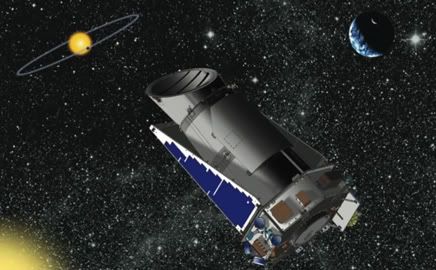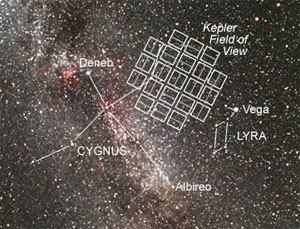Post by glactus on Aug 10, 2009 6:08:19 GMT

Are we alone? Is ours a unique planet or are there many other Earths orbiting other stars? Launched successfully on March 6, 2009, Kepler, a NASA Discovery mission will help scientists determine just how many Earthlike planets may exist in our galactic neighborhood.

Kepler will detect planets indirectly, using the "transit" method. A transit occurs each time a planet crosses the line-of-sight between the planet's parent star that it is orbiting and the observer.
When this happens, the planet blocks some of the light from its star, resulting in a periodic dimming. This periodic signature is used to detect the planet and to determine its size and its orbit.
Kepler will hunt for planets using a specialized one-meter diameter telescope called a photometer to measure the small changes in brightness caused by the transits.
Over a four-year period, Kepler will continuously view an amount of sky about equal to the size of a human hand held at arm's length or about equal in area to two "scoops" of the sky made with the Big Dipper constellation.
In comparison, the Hubble Space Telescope can view only the amount of sky equal to a grain of sand held at arms length, and then only for about a half-hour at a time.
Kepler's findings will tell scientists a lot about how common Earthlike planets may be in the galaxy - and the likelihood of finding a planet near our own that could support life.
Latest information on the condition of the telescope is that it is functioning flawlessly.
Credits: bell Aerospace & Technologies together with the NASA Jet propulsion laboratory.
planetquest.jpl.nasa.gov/missions/


